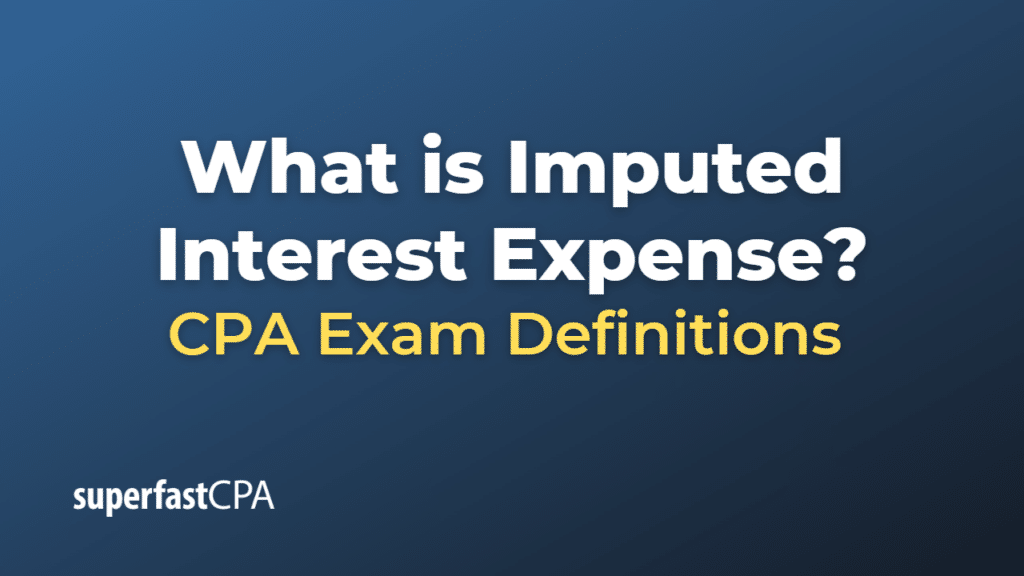Imputed Interest Expense
Imputed interest expense is the estimated or inferred interest expense that a company or individual has for borrowing money, when the actual interest expense is not explicitly stated or is significantly below the market interest rate.
This situation can arise in various circumstances. One common scenario is when a company issues a bond or other form of debt at a discount (below its face value), and then pays back the face value at maturity. The difference between the issuance price and the repayment price is the implied or imputed interest.
Similarly, when a company enters into a transaction with related parties (like subsidiaries, parent company, etc.) and the transaction is conducted interest-free or at a below-market interest rate, tax authorities may impute an interest expense to accurately reflect the cost of borrowing and ensure tax liabilities are met.
The concept of imputed interest expense is similar to imputed interest income. In both cases, the idea is to reflect the true economic cost or benefit of a transaction, even if it is not explicitly stated. It is also used by tax authorities to ensure that taxes are properly paid on transactions that might otherwise escape taxation due to the absence of explicit interest.
For example, if a parent company loans $1 million to a subsidiary interest-free, the tax authorities may impute an interest expense to the subsidiary (and an interest income to the parent company) based on the market rate of interest. This would increase the subsidiary’s expenses (thus decreasing its taxable income) and increase the parent company’s income (thus increasing its taxable income).
Example of Imputed Interest Expense
Imagine a company (Company A) issues a zero-coupon bond, which is a bond that doesn’t pay periodic interest but is issued at a discount to its face value. Let’s say Company A issues a $1,000 zero-coupon bond for $900, and the bond matures in one year. In this scenario, Company A receives $900 now and promises to pay back $1,000 in one year.
The $100 difference between the issue price ($900) and the face value ($1,000) is considered the imputed interest expense. Although the company doesn’t make explicit interest payments, this $100 represents the cost of borrowing money for the company. This cost isn’t paid out but is, instead, implied in the price difference between the bond’s issue price and its face value.
So, even though the company doesn’t pay interest throughout the life of the bond, it would recognize an imputed interest expense of $100. This expense would be recognized incrementally over the life of the bond, and by the time the bond matures, the full $100 would have been recognized as interest expense.
This example illustrates how an imputed interest expense can arise and be recognized in financial accounting, even when no actual interest payment occurs. The imputed interest expense is a way to reflect the economic reality of the cost of borrowing.













